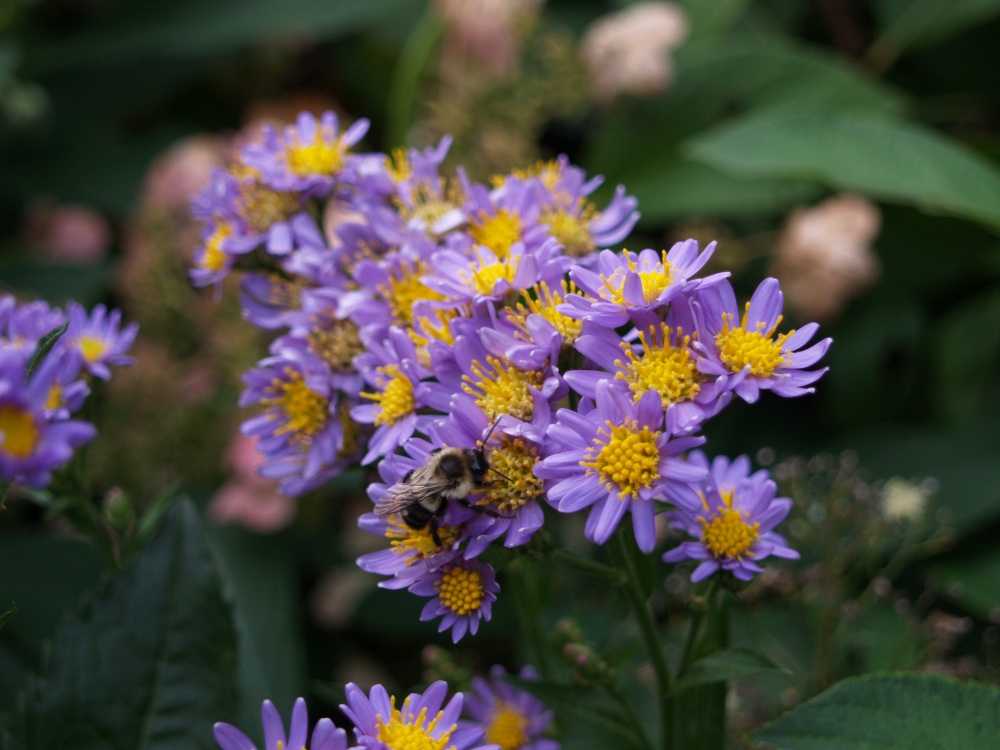Bees and wasps are seen in abundance in the six weeks that mountain mint (Pycnanthemum muticum, below) is at its peak bloom in the garden, but as the flowers fade pollinators move on to gardens unknown. Oddly, toad lilies (Tricyrtis) are visited exclusively by carpenter and bumblebees that largely avoid the busyness of the mountain mint, but their large, rounded bodies must be contorted for a sup of nectar.

With a flower that narrows in its conical shape to varying degrees by cultivar, the carpenter bee learns to bite through the more narrow toad lily flowers from the outside (below). Of course, this defeats the flower’s clever design that deposits pollen on the bees’ hairy backsides as nectar is gathered.

Another favorite of carpenter and bumblebees, the tall ‘Jindai’ aster (Aster tataricus ‘Jindai’, below) often ends the pollinators’ season with a hard October frost. I am pleased that ‘Jindai’ survived a move from behind an ever expanding paperbush (Edgeworthia chrysantha) where it was nearly lost, and a second transplant when the this spot became a bit too shaded. The slowly fading clump was divided into several (in a switch, for once before it was too late), and now all are flourishing, including parts in the shaded area that have improved their lot now that a towering Blue Atlas cedar (Cedrus atlantica ‘Glauca’) has been chopped out.

